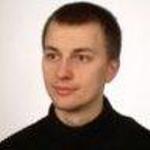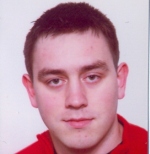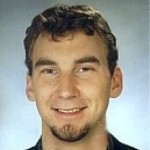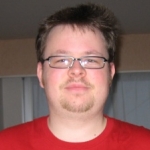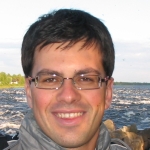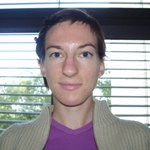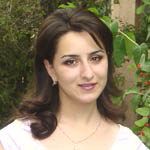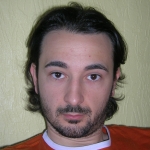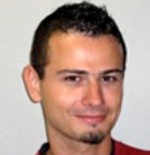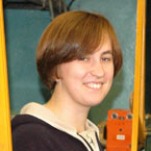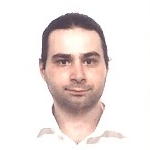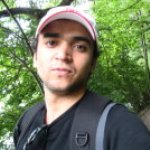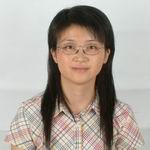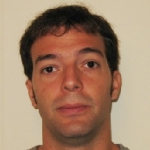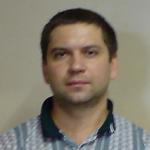|
Jaroslaw MISZCZAK |
Polish Academy of Sciences, Gliwice - Poland |
|
|
Currently I am working on the experimental programming language which could be used to control quantum computer. I use Java as an implementation language and ANTLR compiler construction framework for implementing parser and AST parser. Java was chosen because it allows adding new data types to my language easily. At the moment only basic interpreter works. I am familiar with the Mathematica and I use it quite often for testing new ideas and models. I have working experience in Python programming language (I have developed a SVG module for the Fraunhofer Quantum Computing Simulator: http://www.qc.fraunhofer.de/impressum) and GNU Octave (I work on package for quantum computation: http://quantum-octave.sf.net/). I use PHP and MySQL as an administrator of the Quantiki project (http://www.quantiki.org) and Perl for system administration tasks. |
|
Srecko MOROVIC |
"Ruđer Bošković" Institute, Zagreb - Croatia |
|
|
I am currently a volunteer working for the Particle physics group at Institute Ruder Boskovic in Zagreb, Croatia, applying for a PhD student position which I am looking forward to obtain in June 2007. Since 27th February 2007. I am working at CERN, in CMS ECAL DAQ group on a Java RCMS "function manager" for the ECAL subsystem. I also participate in algorithm development for (electroweak WZ) electron reconstruction analysis and participated in CMS HLT online-selection software development. I had experience with low-level hardware programming and emulation, as I actively participated in an open source project ("DosBox") oriented to emulation of legacy PC hardware and its peripherals. I keep interest in tracking development of important open source projects such as, for example, Linux kernel or X.Org. I am quite familiar with GNU/Linux system architecture and had been administrating a SLC3 Linux-based network at IRB, Zagreb. |
|
Manfred MUECKE |
University of Vienna - Austria |
|
|
I studied electrical engineering with emphasis on telecommunication and computer architectures. I am interested in design and implementation of languages and compilers to enable more efficient description and synthesis of complex FPGA-based computing systems. I wrote my PhD thesis at CERN, focusing on design methodologies for digital signal processing on FPGAs. All LHC experiments use FPGAs in their data acquisition systems at medium trigger levels. It was therefore a most exciting work environment. Currently, I am working on the optimization of molecuar dynamics simulations. |
|
Andrzej NOWAK |
CERN, Geneva - Switzerland |
|
|
Andrzej Nowak has been working at CERN openlab, a partnership between CERN and the industry (Intel, HP, Oracle), since 2007. His early research concerned operating systems security, mobile systems security, and wireless technologies. During his studies in 2005 and 2006, Andrzej worked at Intel, where he researched custom performance optimizations of the Linux kernel and took part in developing one of the first 802.16e (WiMax Mobile) wireless MAN networking standard implementations. Soon after obtaining his diploma, he joined openlab in January 2007. Andrzej deals mostly with multi- and many-core architectures and parallel processing. Another significant area of his work is platform optimization and performance assessment. |
|
Bob OLIVIER |
Max Planck Institut für Physik, Münich - Germany |
|
|
I am an experimental high-energy physicist from the University Pierre and Marie Curie, Paris, where I started my PhD in 1998. I was sent to Fermilab at Chicago, where I worked with the D0 experiment. This meant writing online software to handle communication tasks from the control room to various hardware, GUI's with Python, offline reconstruction algorithms and data analysis code using ROOT. Since 2001 I am working for the H1 experiment at DESY. I developed an automatic histogram-based data quality tool intensively used by the collaboration. This included various scripting languages to handle daily hundreds of batch jobs running the H1 analysis software based on ROOT, and a cgi end-user Web interface. Calorimeter trigger upgrades lead to software development on LynxOS. So far I did quite some computing and want to do more. My next projects at ATLAS and ILC will greatly benefit from what I will learn at the CSC on GRID, modern software design, Web services, and HEP computing. |
|
Alfredo PAGANO |
INFN-CNAF, Bologna - Italy |
|
|
I am mainly involved in the operations and user support for the Italian Grid infrastructure and EGEE project. Site manager for the INFN-CNAF site, I work in strict contact with our Tier1. In the SA1 activity I represent one of the three COD members of the Italian federation. Each federation, following a rotating shift, is responsible for detecting problems of EGEE Grid, coordinating the diagnosis, and monitoring the problems through to resolution. This is done in cooperation with the Regional Operations Centers (ROC). Furthermore, always inside the COD group, with my colleague A.Cavalli I develop failover solutions for EGEE Core services. A partial geographically distributed failover solution for the monitoring systems of the WLCG-EGEE has been put in place and in continues improvement. I obtained last year a master degree in computer science with full marks. |
|
Senka PINTARIĆ |
"Ruđer Bošković" Institute, Zagreb - Croatia |
|
|
I recently finished my diploma thesis where I was looking for possibilities of anomalous vector boson coupling signal detection in the CMS detector. In the summer of 2005 I was at CERN as summer student working on ATLAS muon endcap. Now I started working on CMS Trigger and learning programming in C++.
|
|
Tatevik POGHOSYAN |
Yerevan Physics Institute - Armenia |
|
|
I am working since 2003 in the Yerevan Physics Institute (YerPhI) group, which participates in the ALICE and NA60 experiments as well as in the Grid activity of CERN. At the early stages I was involved in the performance studies and simulations for the ALICE detector. In 2004, I have started data analysis of NA60 experiment, which constitutes my PhD thesis. Within the Grid activity of the YerPhI group, I am fulfilling the duties of the administrator for the ArmeSFo Certification Authority, accredited member of EUGrid PMA. This work comprises Linux system administration, Linux Bash shell programming and OpenSSL framework usage.
|
|
Giovanni POLESE |
CERN, Geneva - Switzerland |
|
|
My work is focused on the installation, commissioning and start-up of the Detector Control system (DCS) for the Resistive Plate Chambers in the CMS experiment. I have designed, implemented and tested the RPC DCS for controlling and monitoring all the detector working parameters. In details he has developed the control system, using a commercial SCADA, PVSS II, and the JCOP Framework, both common to all LHC experiments, for controlling and monitoring the slow control. This software tool is running on windows and Linux machine and use a C-like programming language. Therefore part of the work is based on the archiving of PVSS data on an Oracle DB and on the development of the db structure using PL/SQL. Other important task I am involved, is the design and development of a XDAQ application for the configuring of the RPC front-end electronics and their communication with Link Board. XDAQ is a programming toolkit for distributed data acquisition systems, running on linux and based on C++. |
|
Branislav POLETANOVIC |
Physikalisches Institut der Universität Bonn - Germany |
|
I am currently working on my PhD thesis in Astroparticle Physics on a topic related to the dark matter and dark energy problem. Astroparticle physics provide a number of possible candidates to solve this problem, especially when we take Supersymmetry into account. We are focusing on the axino. In our work we have to make extensive numerical simulations to solve the Boltzmann equation under consideration of a large set of parameters and the relevant thermal production processes.
|
|
Dunja POLIC |
Technical University of Split - Croatia |
|
|
I am a first year graduate student of particle physics at University of Zagreb, Physics Department, and I work at Technical University of Split as teaching assistant. At present time, I am mainly concentrated on studying for exams and learning software tools that will be required for my work in physics. I have just registered to CMS experiment on CERN, as a part of group of people from Split who work on that experiment. My work will be related to ECAL. |
|
Biagio ROSSI |
University of Bern - Switzerland |
|
|
I am presently working on the development of novel liquid argon TPC detectors for the next generation of neutrino experiments and on the study of glass capillary targets filled with liquid scintillator readout by optoelectronic chains. In these projects, I am particularly interested in the cryogenic technology, in the calibration of the detectors with radioactive sources and UV laser beam, in the readout and DAQ systems, and in developing suitable event reconstruction algorithms, as well as analysis tools.
|
|
Tatiana RYBITSKAYA |
Budker Institute of Nuclear Physics, Novosibirsk - Russia |
|
|
My current work at the Injector complex VEPP-5 of Budker INP is related to the development beam dynamics simulation code, which uses macroparticle method, for electron linac tuning automation. This requires knowledge of distributed network process programming (including communication with distributed control system) as well as an understanding of the accelerator physics. |
|
Jose Afonso SANCHES |
Universidade do Estado do Rio de Janeiro - Brazil |
|
I am a member of one of the Monte Carlo production teams (LCG7 at CERN). It includes the operation and configuration of the software used (ProdAgent), plus keeping track of, and reporting possible jobs' errors to the CMSSW/Grid people. - Also, I am being trained as a CMSSW TroubleShooter, which relates to helping CMSSW users to solve their problems. |
|
George SERBANUT |
INFN / University of Turin - Italy |
|
|
I am doing Monte Carlo simulations for PANDA (antiProton ANnihilation in DArmstadt) based on ROOT and GEANT4. Mostly, I am working under LINUX (SL4), but from time to time I develop my applications also under Cygwin (MS Windows). |
|
Syed Yousaf SHAH |
CERN, Geneva - Switzerland |
|
|
Currently I am working at CERN on Detector Control and Safety System for CMS experiment. Since last year I have been working on various tasks for Data Acquisition system (DAQ) and Control System. My Current development suit consists of Large Scale SCADA system using ETM-PVSS-II on Windows and Linux System, PLCs, Oracle 9i and Java. Gluing them together I am designing and developing a control and safety system for Tracker. Previously I have been working on DAQ using Run Control and Management System (RCMS) for Finnish Cosmic Rack (FinnCRack). |
|
Jingyan SHI |
IHEP, Beijing – China (Republic of) |
|
|
I am a PhD Student working at the computing Center of Institute of High Energy Physics (IHEP). This is my third year of study. Now, I am involved in the project which aims to provide a high efficient computing environment for the Beijing Spectrometer III (BES-III) offline job running on both local PC farm and grid. BES-III is the new detector of the Beijing Electron Positron Collider II (BEPC-II), which is a high luminosity, multi-bunch collider. My main task is to provide a robust job management system for BES-III physicists. |
|
Rodrigo SIERRA |
CERN, Geneva - Switzerland |
|
|
I am currently working at CERN in the Communication Systems group. I’m the responsible for the fix telephone network, including its maintenance, upgrade and support. I’m also the responsible for the audioconference and IP telephony systems, evaluating the necessities and looking for suitable solutions at CERN. Part of my duties consist of developing management and monitoring tools for the service, facilitating the maintenance and troubleshooting at the same time we automate several service tasks.
|
|
Vasily SIMUTKIN |
Uppsala University - Sweden |
|
|
I am a PhD student of the Department of Neutron Research and my current work is devoted to the measurement of the U238 fission cross-sections for the neutron energy of 175 MeV at the neutron beam facility of The Svedberg Laboratory. The SVEDAQ system (http://nsg.tsl.uu.se/~nyberg/tsl/svedaq/welcome.html) is used for the data acquisition and the ROOT framework for the offline data analysis. |
